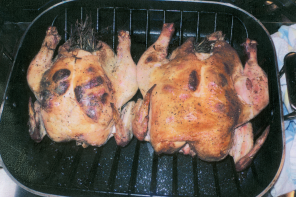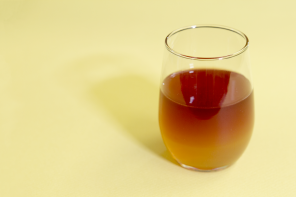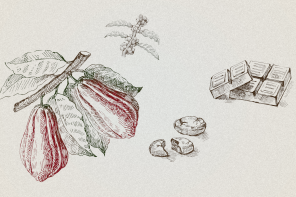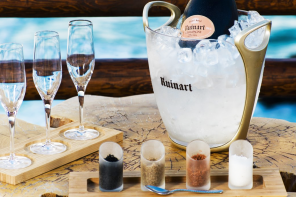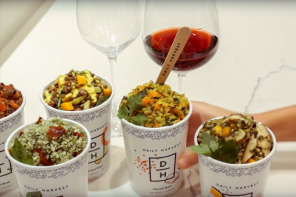Sometimes similar things go great together. Sometimes opposites attract. Using matching or contrasting flavors when selecting food or wine can aid in letting both parties shine, igniting a culinary blast off of flavors, textures and aromas on the palate.
The goal of mirroring the characteristics of the food on your plate to the wine in your glass is exactly that – to marry those aromas in one delectable bite and sip after another. If you enjoy raw oysters, let your mind take you out to sea. Which winemaking regions are near the sea? Sicily, Rias Baixas, Santorini – to name a few. All of these regions make perfectly crisp, lemony, salty white wines that will beautifully reflect the flavors of the oysters. Assyrtiko with Prince Edward Island oysters will have your inner Oliver Twist coming out asking for more.
Though, when trying to match the flavors, it’s important to remember the backbones that uplift those perfect matches. Acid and fat are elements that are joined in holy matrimony by the culinary gods. Wines from cooler climates will not produce as much natural sugar as ones from warmer regions. However, these grapes will be higher in acid. Red wines made from Pinot Noir in cooler Burgundy will be higher be in acid than a Pinot Noir from warm Central Coast California. A Burgundian Pinot Noir will also be more herbaceous. Aromas of wet earth, tart cherry, Alpine spice or roses petals will spill out of this wine. Its tart fruit will cut through fatty meats. Perhaps it would pair nicely with an aromatic, herbal duck confit and mirror its flavors.
A California Pinot will find its perfect counterpart with something ripe that also contains sweet flavors, perhaps a roasted beet and ricotta salad. The creaminess of the ricotta and sweetness of the beets will mirror the ripe strawberry and sweet oak flavors in the wine.
When looking for contrasting flavors, balance is key. You would never want a high-acid, dry Riesling with Thai curry. You may as well rip out your tongue and toss it out the window. Spicy foods need a wine of good balance, with lower acidity and a touch of sweetness – like a sweet German Riesling. If you don’t like sweet wines, wonderfully floral and low-acid Viognier or Gewürztraminer are great substitutes. The sugar and lower acid will cool those spicy notes, making you not regret ordering the spiciest dish on the menu.
One of my favorite pairings of contrast is an off-dry Lambrusco with roasted West Coast oysters bathed in cocktail or mignonette sauce. The wild strawberry and sweet cherry notes along with Lambrusco’s sugar content soften the blow of the indulgence of horseradish. The slightly higher acidity will also help cut through the creaminess and richness of the West Coast oyster.
So many different factors contribute to finding the perfect pairing. Budget, event type, menu, guest’s perception. But, it’s best to find what works for you. Be confident in your choices. Using these broad guidelines will have your guests and palate thanking you.
